-
How Do Root Canals Work?

If you have learned that you may need a root canal procedure, you may be wondering what exactly this procedure entails. Root canal technology has advanced significantly in recent years, and your St. Louis dentist will be able to provide you with a much more comfortable experience than dental patients of the past could expect. Here is a brief overview of how a root canal works.
Accessing the Infected Tooth
When you come to your dentist’s office for a root canal procedure, your dentist will begin by applying local anesthesia in order to ensure your comfort. A rubber dam is placed to keep the tooth dry. Then, your dentist will gain access to the inside of your tooth—that is, the root canal. At West County Dental, we utilize the Solea Laser to ensure precise and painless treatment during this procedure.Removing Infected Tissue and Pulp
Once your dentist has gained access to the root canal, he will remove all of the infected tissue from your tooth’s interior. Patients can expect this step of the procedure to be painless and safe. Your dentist will continue cleaning the inside of your tooth until all of the pulp and nerve tissue has been taken out.Filling and Sealing the Tooth
The final step of the root canal procedure is to fill and seal the tooth. This often takes place at a second appointment. After your dentist has finished cleaning out your tooth, he will seal it using a filling, then place a dental cap to ensure that the tooth stays stable and free from future infection. Your treated tooth may be sensitive for a period of time after the procedure.If you are experiencing any discomfort in your teeth, it’s time to visit Dr. Spalitto and his team at West County Dental. We will be happy to thoroughly answer your questions about oral care and address any concerns that you may have about root canals. Call us today at (314) 821-2712 to set up an appointment at our office.
-
Precise Dentistry with the Solea Laser
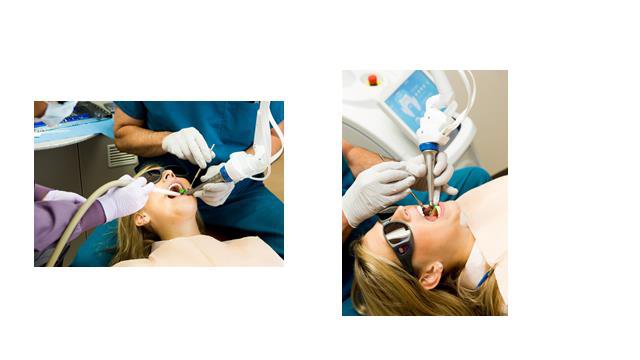
Can you imagine going to the dentist and receiving painless treatment for tooth decay without anesthesia? With the Solea Laser, that dream has become a reality. Approved by the FDA in 1990, the Solea Laser allows your St. Louis dentist to perform procedures with greater precision and virtually no discomfort for the patient. The laser, which is less than one-eighth the diameter of a human hair, effectively replaces the dental drill. It does not vibrate or make any noise, and it results in no bleeding during soft tissue procedures. It’s the perfect solution for any patient who has ever dreaded a visit to the dentist, making even oral surgery a sensationless experience.
At West County Dental, we are proud to utilize state-of-the-art dental technology, including the Solea Laser , to ensure the best possible care for our patients. Visit our website to learn more about our services, or call us today at (314) 821-2712 to schedule an appointment with Dr. Spalitto.
-
Reasons You Need a Dental Filling
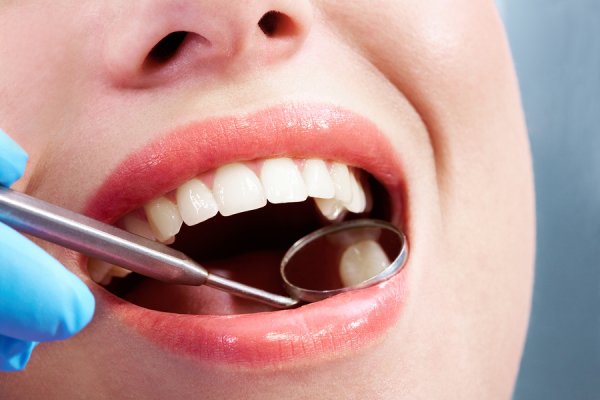
A dental filling is a straightforward procedure that can generally be performed in your dentist’s office during the course of one visit. There are a number of reasons why your family dentist in St. Louis may advise you that a dental filling is necessary. Keep reading to learn a few of the most common reasons why patients require dental fillings.
Cavities
During a routine cleaning, your dentist will examine your teeth to check for any signs of tooth decay. If your dentist discovers a cavity on any of your teeth, he or she will recommend either a filling or another course of action such as a root canal procedure. Toothache and sensitivity to hot and cold sensations are some of the most common symptoms of a cavity, so if you experience these symptoms, call your dentist.Tooth Fractures
Fractured teeth can also be treated with fillings. If you have suffered a tooth fracture—whether because of trauma to your tooth, biting into a hard piece of food, or another incident—it is important to make an appointment with your dentist as soon as possible. Tooth fractures can become significantly worse if they are not addressed right away, and they can lead to bacterial infections in your mouth.Replacing an Old Filling
All fillings may eventually need to be replaced. Pressure from chewing, as well as clenching or grinding your teeth, can take a toll on older fillings. Over time, these factors can cause fillings to chip, crack, or even fall out. Bacteria can also accumulate in the cavity left from a missing or improperly positioned filling and lead to infections.How long has it been since your last dental cleaning? If your teeth are in need of professional care, call West County Dental at (314) 821-2712 to make an appointment. You can always count on us for quality dental care using state-of-the-art technology. Dr. Spalitto and his knowledgeable team will ensure that your experience is comfortable, positive, and relaxing.
-
What Causes Bad Breath?
Dr. Spalitto refers to bad breath as halitosis. As you will learn in this video, bad breath can signify an underlying dental problem.Chronic bad breath is a common problem in family dentistry. While occasional bad breath is no cause for concern, you should tell your dentist if your bad breath lasts longer than a few hours. Halitosis may be caused by gum disease or could signify a tooth abscess or infection. Cavities and gum disease require immediate treatment for the best possible prognosis.
If you suffer from bad breath, seek treatment from dentist Dr. Spalitto by calling West County Dental at (314) 821-2712.
-
Treating Gum Disease with Lasers
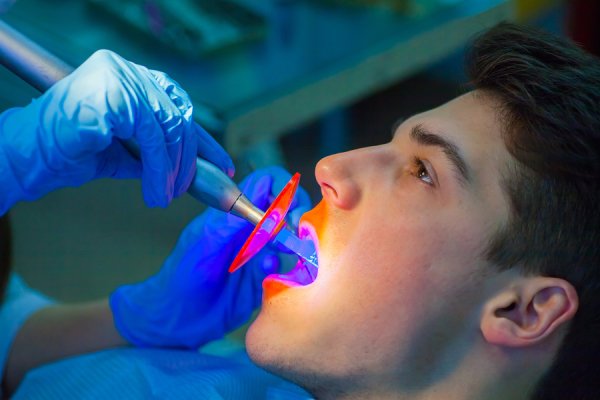
Laser dentistry is an increasingly popular way for Dr. Spalitto, a dentist near St. Louis, to treat gum disease. Gum disease can pose serious risks to your oral and overall health. When plaque accumulates between the teeth and along the gumline, it can solidify into tartar. Plaque causes both cavities and gum disease. If untreated by a dentist, gum disease leads to tender, red, and bleeding gums. It can also cause tooth loss. Fortunately, gum disease can be treated with laser dentistry. Read on to learn more how laser dentistry treats gum disease.
Targeted Method
Laser dentistry is preferred by many dentists who treat gum disease because it targets only the affected tissue. With traditional techniques, a dentist uses tools to treat problem areas. Unfortunately, these tools can cause damage to nearby tissues and lead to longer recovery times. With laser dentistry, a dentist is able to reshape the soft gum tissue. The entire procedure is almost completely pain free and requires substantially less recovery time.General Steps
When it comes to treating gum disease or periodontal disease, laser dentistry is a four-step process. First, your dentist will pre-test bacteria to determine how far the disease has progressed. Next, he or she will use a laser to de-contaminate deep gum pockets. Finally, the laser dentistry treatment is executed with a microscope. At the end, your dentist will test your gums to make sure the gum disease has been resolved.Additional Benefits
In addition to sparing nearby healthy gum tissue, laser dentistry offers various benefits for gum disease treatment. By using a laser, your dentist can eliminate gum bleeding immediately. Your dentist can also reduce or completely fix loose teeth. Laser dentistry ensures that healthy bone and ligament tissue regenerate. Finally, when compared with gum surgery, laser dentistry minimizes swelling.Find out more about laser dentistry by speaking with a dentist today. Call Dr. Spalitto at West County Dental at (314) 821-2712.
-
A Better Smile with Invisalign
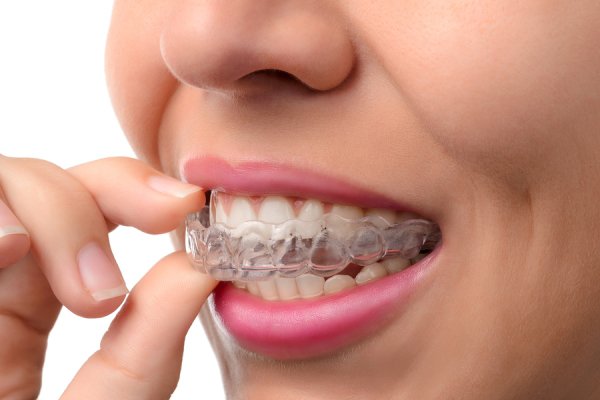
When it comes to family dentistry in St. Louis, Invisalign is Dr. Spalitto’s preferred technique for treating misaligned teeth. Invisalign can help patients of all ages achieve the smiles of their dreams.
Family dentistry has long relied upon braces to straighten teeth. If your teeth are misaligned, gapped, or overlapping, you may suffer serious oral and overall health problems. Misaligned teeth are difficult to clean, which means you can develop cavities and gum disease from accumulated plaque. When a dentist uses Invisalign to straighten teeth, it ensures that you will have a much healthier smile. Invisalign is also much easier to care for than traditional metal braces. Simply remove the clear aligners before eating or brushing your teeth. Because you have no painful metal brackets to work around, brushing and flossing are more effective. Additionally, Invisalign does not require your dentist to perform constant adjustments. Best of all, almost no one will be able to tell you are wearing braces. At the end of your Invisalign treatment, you will have a beautiful smile.
Learn more about Invisalign by calling Dr. Spalitto of West County Dental at (314) 821-2712 today.
-
Signs You May Need a Root Canal

Root canals in St. Louis are routine and completely safe procedures . While some people feel understandably anxious about the idea of root canals, an experienced dentist like Dr. Spalitto can guide you through the procedure and make sure you feel comfortable throughout. Root canals are necessary if a tooth’s inner tissue has become severely infected and requires cleaning and removal. A root canal can often preserve the natural tooth, as long as the infection is treated right away. Keep reading for some common signs you may need a root canal, including severe pain, a sensitive tooth, and swollen gums.
Severe Pain
Root canals are most often signified by a severe toothache. A root canal is required when there are problems with the tooth’s nerve and soft inner pulp. While root canal pain may be dull and relatively moderate at first, the pain becomes more severe as the infection worsens. Root canal pain does not improve on its own or simply go away. Once the infection has set in, it will continue to progress until it is treated by a dentist.Sensitive Tooth
A tooth that is especially sensitive to hot, cold, or sweet foods or drinks is another sign you may need a root canal. Tooth sensitivity can occur for many reasons. Some people have naturally sensitive teeth, while others suffer from sensitivity because the outermost enamel has worn off. Sensitive teeth may also indicate cavities. However, if you experience extreme sensitivity, especially when biting down, you may need a root canal.Swollen Gums
Swollen gums can also indicate that you need root canal treatment. When the tooth becomes infected, the nearby sensitive gum tissues can become inflamed. Your gums may feel red or tender or look swollen. However, these are also symptoms of gum disease, so be sure to visit a dentist to rule out the possibility of gingivitis.If you have been experiencing the above symptoms and are concerned you may need a root canal, contact Dr. Spalitto and the team at West County Dental by calling (314) 821-2712 today.
-
Protecting Your Teeth
Dentists in St. Louis, like Dr. Spalitto, are dedicated to keeping your smile healthy. In this video, the ADA suggests wearing a mouthguard whenever you participate in any athletic activity.In family dentistry, keeping patients’ teeth and gums healthy is important. A dentist advises both kids and adults to wear a mouthguard whenever playing contact sports, including football, basketball, or soccer. However, dentists also urges patients of all ages to wear a mouthguard even when taking part in solo athletic activities, like biking, running, or rollerblading. Your dentist can fit you with a customized, comfortable mouthguard.
To learn even more about why mouthguards are essential in family dentistry, contact Dr. Spalitto by calling (314) 821-2712 to speak to a dentist.
-
Inside the Root Canal Procedure
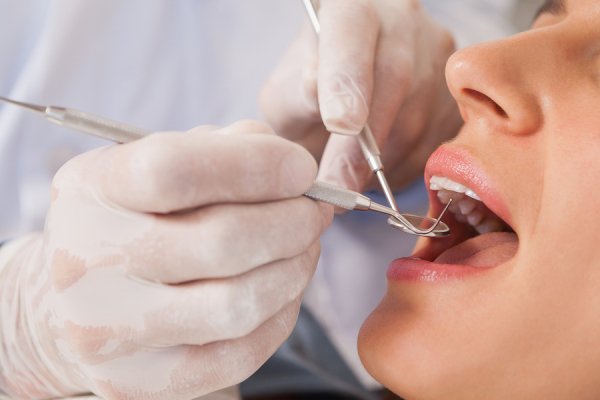
Root canals in St. Louis are common procedures in family dentistry. A dentist advises patients to have a root canal when the tooth’s inner pulp becomes infected or inflamed. Most often, patients report to their dentist office complaining of tooth pain or sensitivity. Some patients may also notice that the affected tooth has become discolored, while others feel tenderness and pain in their gums. Keep reading to learn more about the steps involved in root canals, including a full examination, initial procedure, and tooth restoration.
Full Examination
The first step in treating root canals involves a full examination by a dentist. After you report to your dentist with root canal pain or another symptom, he or she will take an X-ray to determine the extent of the infection. Next, your dentist will diagnose you with a root canal, and explain how the infection occurred. Root canals are generally performed after trauma to the tooth, deep cavities, or dental procedures. Finally, your dentist will arrange a time when you will return for the root canal.
Quick Procedure
During the root canal procedure itself, your dentist will gain access into the root canal. The tooth pulp and decayed nerve tissue are completely removed, and the tooth itself is cleaned out. Disinfectants will be used regularly to flush away infected tooth tissue. Once the tooth has been thoroughly cleaned, it is sealed. Your dentist may also place medication inside the tooth if it is more seriously infected. The final closing of the tooth will happen the same day. Depending on the tooth, you will receive a crown or a filling.Whether you want to know more about root canals or are interested in cosmetic dentistry procedures, contact Dr. Spalitto and his team by calling (314) 821-2712 today.
-
The Importance of Routine Dental Cleanings

Professional teeth cleanings are important for keeping your whole mouth healthy, which is why you should make sure to schedule regular appointments with Dr. Spalitto’s family dentistry practice in St. Louis. A dentist like Dr. Spalitto can make sure your teeth and gums stay free of plaque.
One of the most essential parts of family dentistry is simply scheduling a bi-annual visit with your dentist. Only professional teeth cleanings can effectively remove plaque and tartar where they have built up around your gumlines. While brushing twice per day and flossing each night are also important, only a dentist can use the high-powered tools necessary to get rid of plaque. If plaque is allowed to accumulate, it can lead to cavities and gum disease. Dental cleanings are also important for children, as a family dental care practitioner can provide fluoride rinses. Fluoride is vital to preserving the tooth’s hard enamel and warding off tooth decay. A dentist also examines your teeth and gums and checks your biting, chewing, and swallowing patterns to make sure they are normal.
Set up a teeth cleaning today by calling Dr. Spalitto at (314) 821-2712 today.
RECENT POSTS
categories
- Uncategorized
- crowns
- dental veneers
- dentists
- full service dental practice
- porcelain veneers
- same day crowns
- Dental Cosmetic Surgery
- Dental Implants
- Dentistry
- Dentist Review
- Laser Dentistry
- Root Canal
- Sedation Dentistry
- Dentures
- Cleanings
- Teeth Whitening
- Abscessed Teeth
- Cosmetic Dentistry
- Infographic
- Cavities
- Sealants
- Gum Recession
- Periodontal Disease
- Dental Health
- Family Dentistry
- Dental Emergency
- Invisalign
- Filling
- Same Day Dental Procedures
- Gum disease
- Sleep Apnea
Archives
2022
2021
- December (2)
- November (1)
- October (3)
- September (2)
- August (2)
- July (2)
- June (2)
- May (2)
- April (2)
- March (2)
- January (2)
2020
2016
2015
- December (4)
- November (3)
- October (3)
- September (4)
- August (4)
- July (4)
- June (4)
- May (3)
- April (3)
- March (4)
- February (5)
- January (6)

